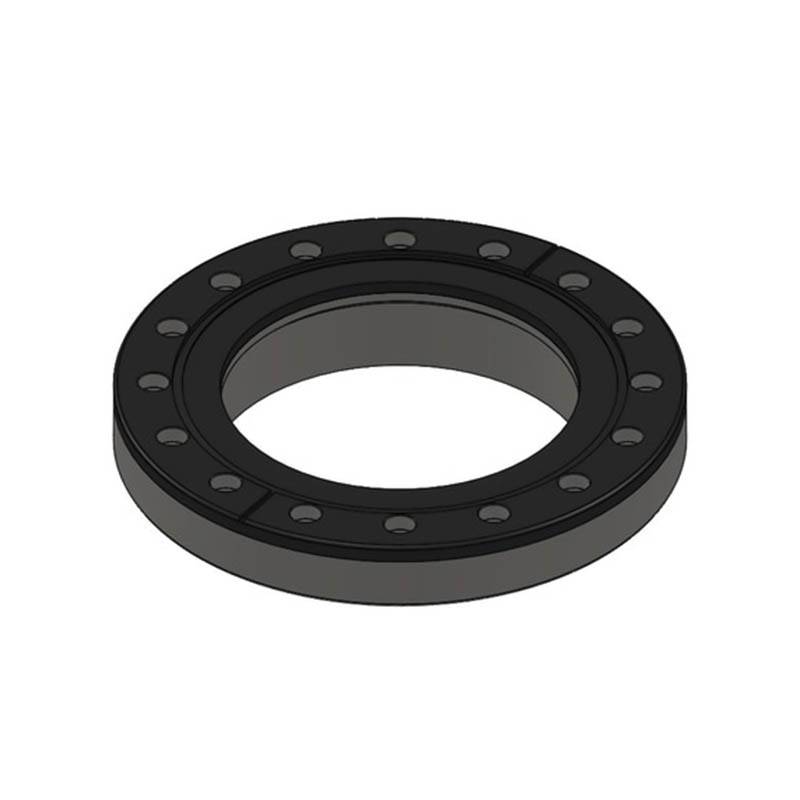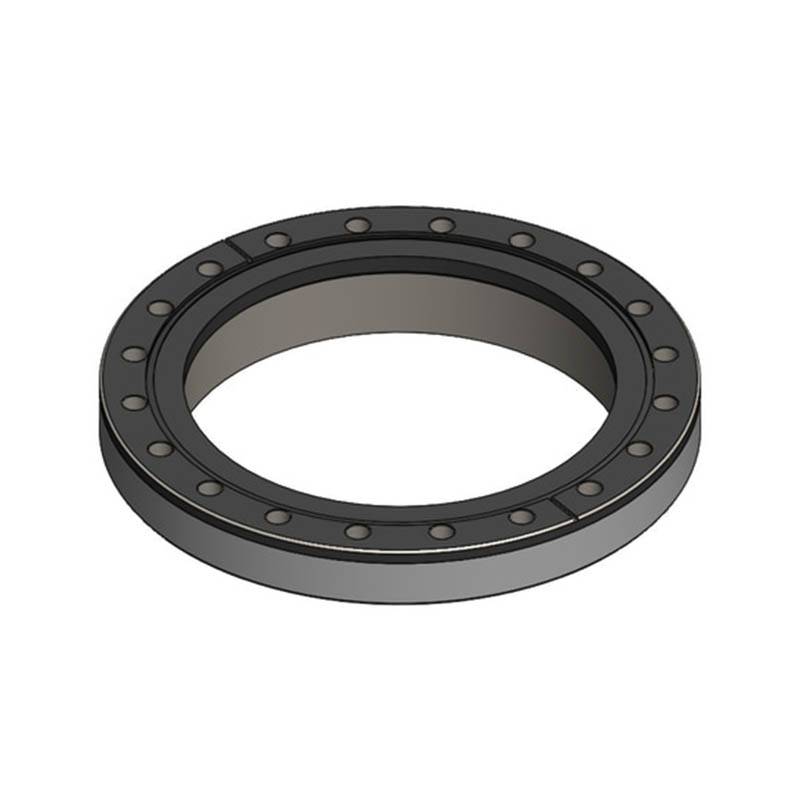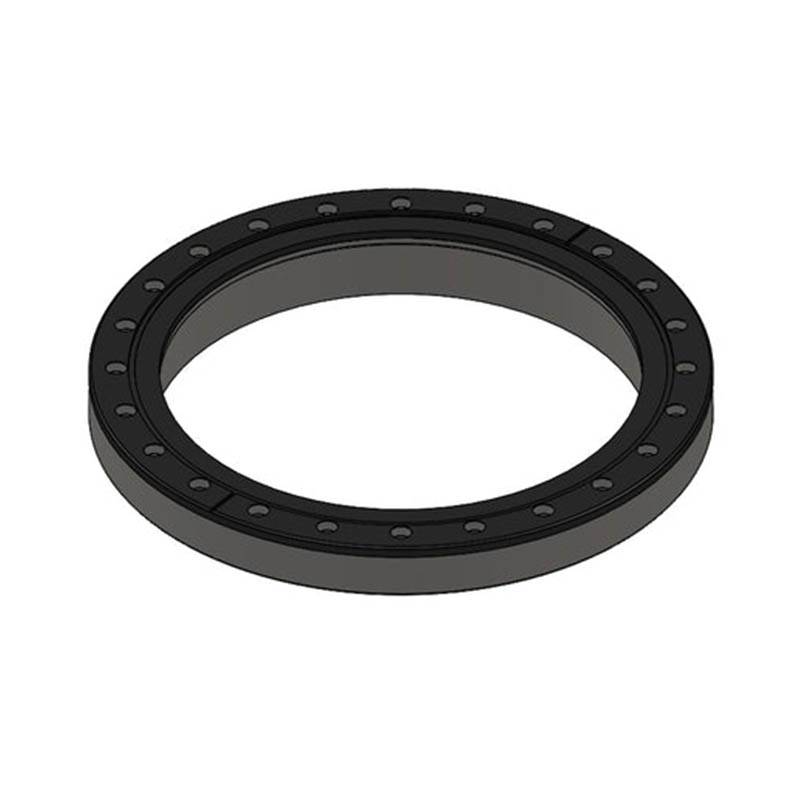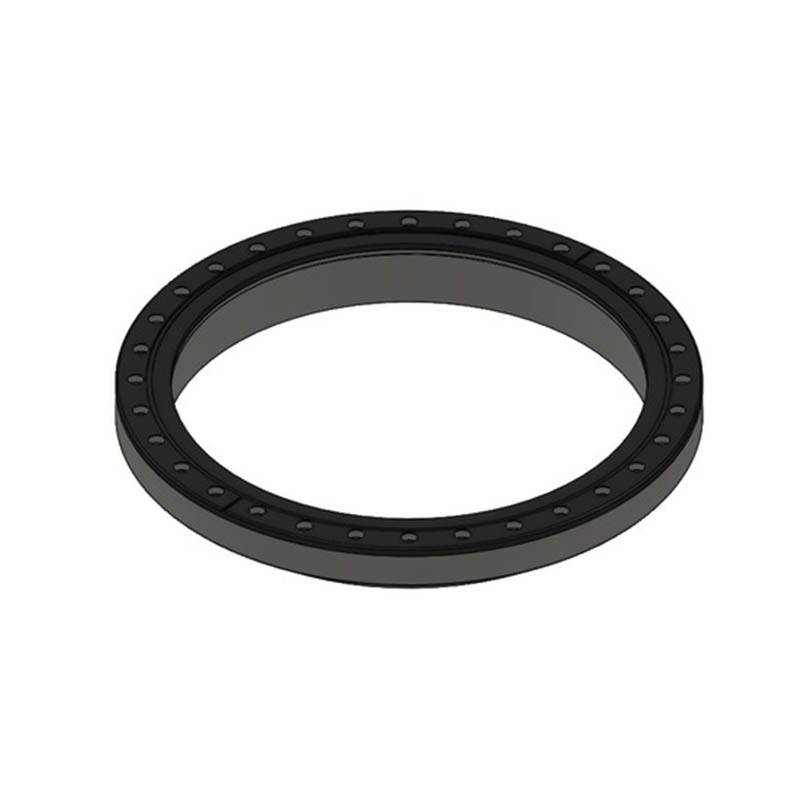Ti-Al Bonded Bimetal CF Flanges
Grade 2 Titanium to 6061-T6 Aluminum Bimetal ConFlat flanges offer users the unique ability to harness the properties of two different metal alloys in their UHV or XHV processes. Ti/Al bimetal CF flanges are available in industry-standard sizes (mini 1.33″ to 12.0″), rotatable and fixed geometries, and various bolt hole types.
Ti-Al bimetal flange users can rely on the strength of bimetal explosion bonding to weld aluminum system connections to aluminum chambers with titanium-faced ConFlat flanges. Aluminum system connections provide increased vibration dampening, decreased outgassing paths, and greater thermal conductivity and diffusivity; and, Titanium offers high electrical resistance, low-z number, and high yield strength while being lightweight.
Titanium to Aluminum Bimetal ConFlat flanges find extensive application in advanced scientific research, aerospace technology, nuclear research, high-energy physics, and nanotechnology. These versatile flanges cater to diverse UHV and XHV processes, ensuring optimal performance and reliability in challenging environments.
Titanium Material Benefits
- Lightweight and High Yield Strength: Perfect for chamber and transfer systems, titanium’s lightweight nature coupled with its high yield strength ensures efficiency and durability
- Low-Z Number: An advantage during installation and maintenance under high-radiation levels, making it superior to stainless steel in nuclear applications.
- Low Young’s Modulus: Ideal as it ensures effective vibration dampening and operational stability.
- Low Thermal Expansion Coefficient: Offers an advantage during heating processes, reducing the likelihood of developing leaks during bakeouts.
- Non-Magnetic Property: Perfect for use in applications with strong magnetic fields, as it remains non-magnetic and minimizes interference.
- High Corrosion Resistance: The chemically stable surface oxide layer grants Grade 2 Titanium high corrosion resistance, making it the most biocompatible metal with exceptional durability.
- Low Thermal Conductivity and High Melting Point: Beneficial for specific thermal management requirements and applications demanding high melting points.
- High Electric Resistance: Possesses high electrical resistance, making it suitable for applications requiring electrical insulation.
Aluminum Material Benefits
- Enhanced Thermal Conductivity: Aluminum boasts a thermal conductivity that is more than 10 times that of stainless steel, ensuring efficient heat transfer within your vacuum systems.
- Greater Thermal Diffusivity: Aluminum has a thermal diffusivity 17 times that of stainless steel, aluminum enables fast, uniform bakeouts, helping achieve UHV levels in less than 24 hours for most aluminum chambers.
- Superior Vibration Dampening: With a Young’s modulus approximately 1/3 of stainless steel, aluminum provides better vibration dampening, ensuring stable and reliable operations.
- Hydrogen Minimization: Aluminum reduces the risk of hydrogen-related issues in critical applications with 7 orders of magnitude less Hydrogen than stainless steel
- Magnetic Invisibility: Aluminum is magnetically invisible compared to stainless steel, making it an excellent choice where magnetic interference must be minimized.
- Low-Temperature Bakeout: Aluminum flanges support low-temperature bakeouts of 150°C, enabling efficient and controlled processes.
- Lower Outgassing Rates: Aluminum exhibits lower outgassing rates compared to stainless steel, contributing to a cleaner and more reliable vacuum environment








